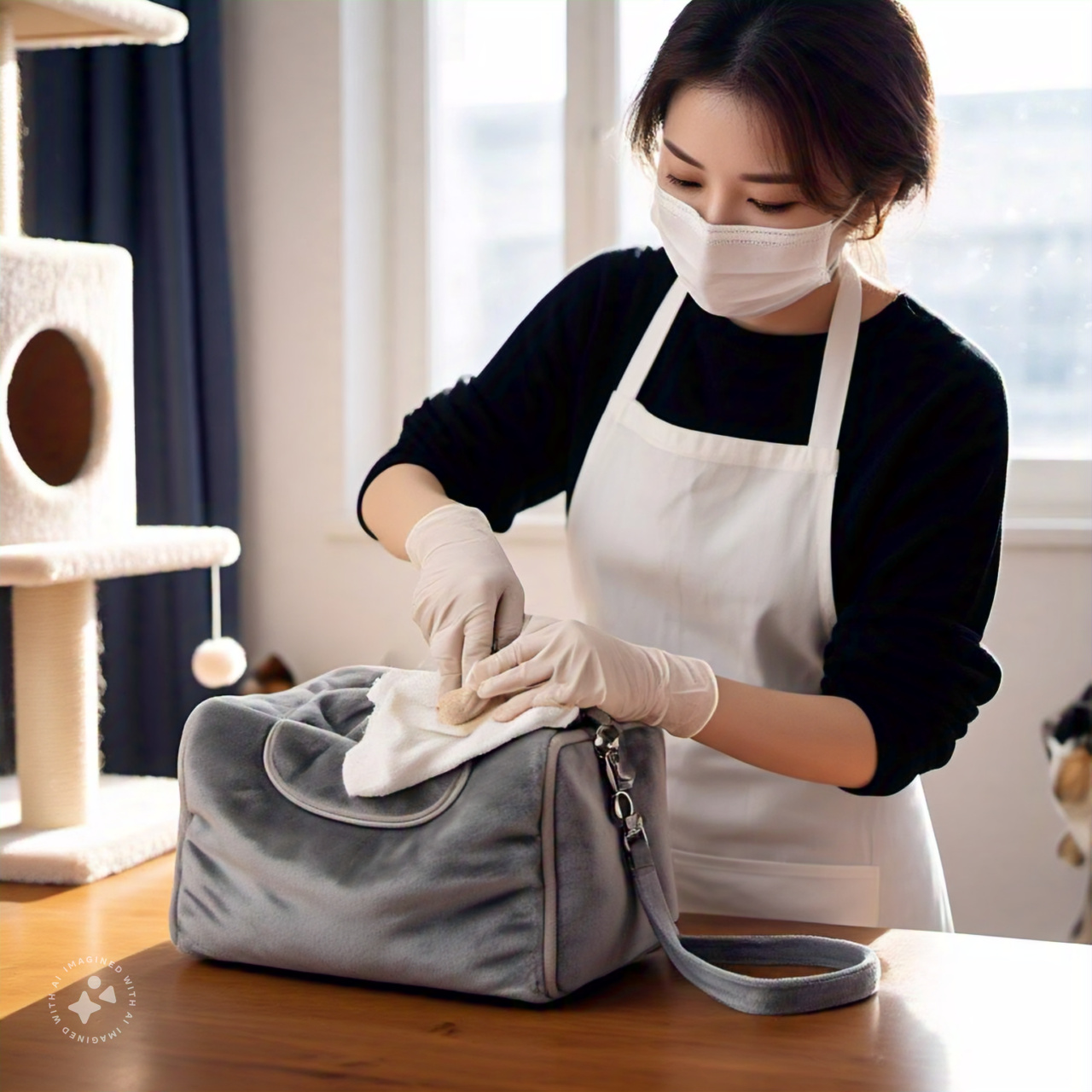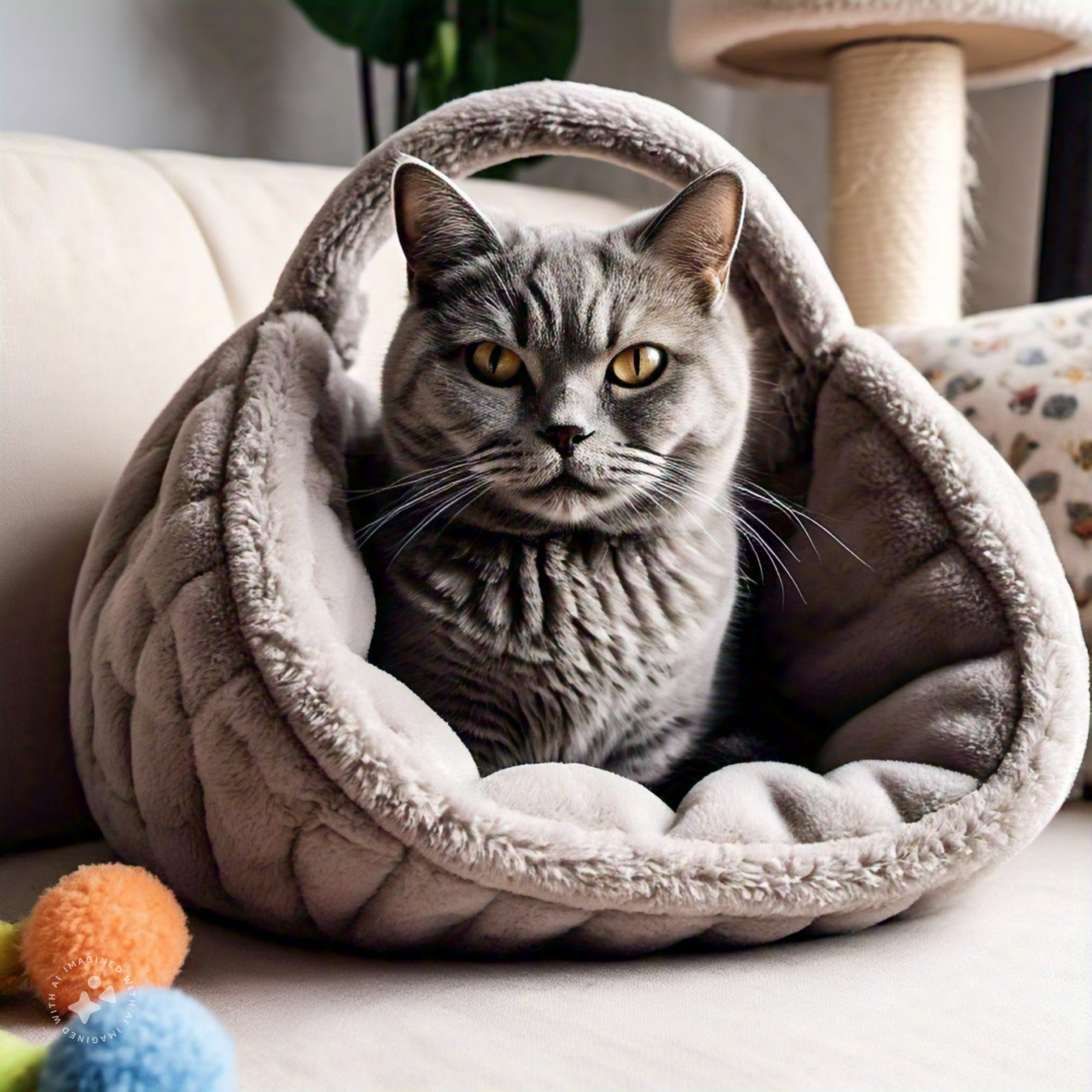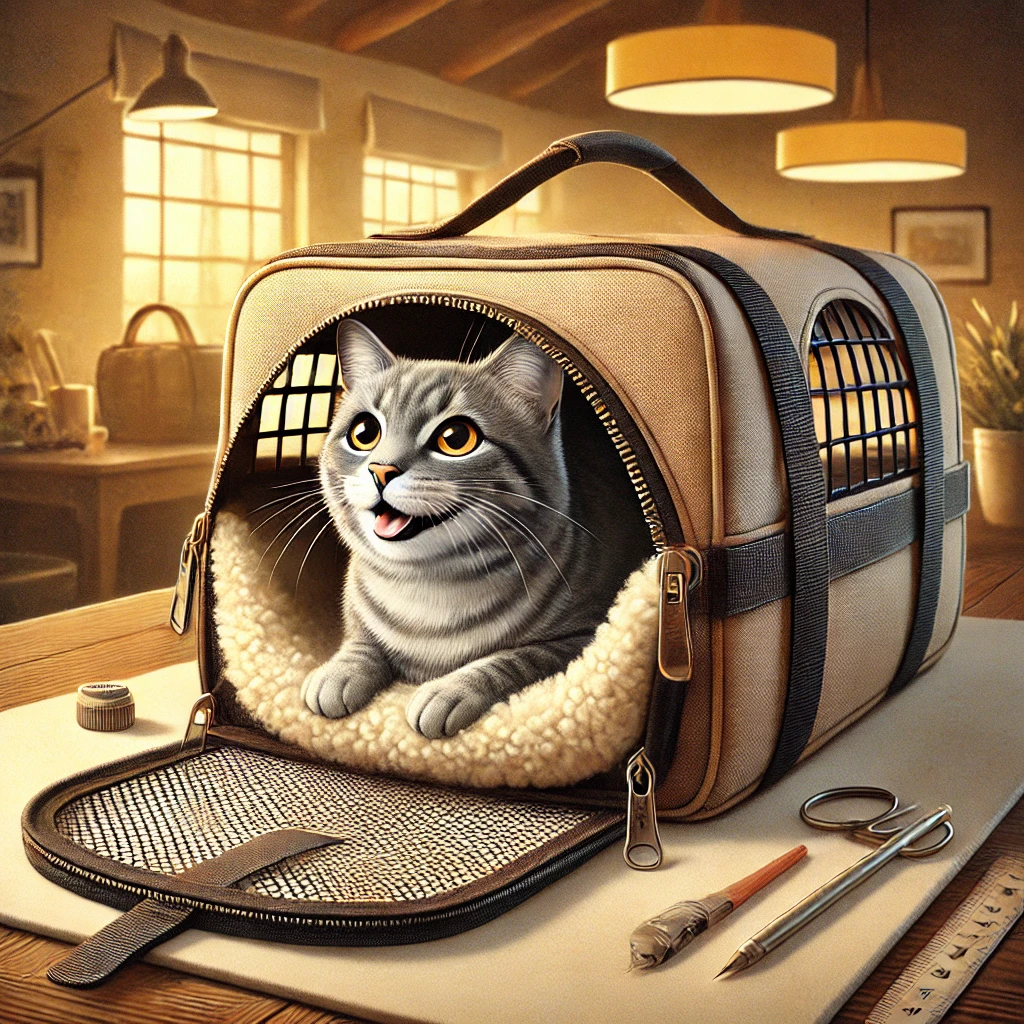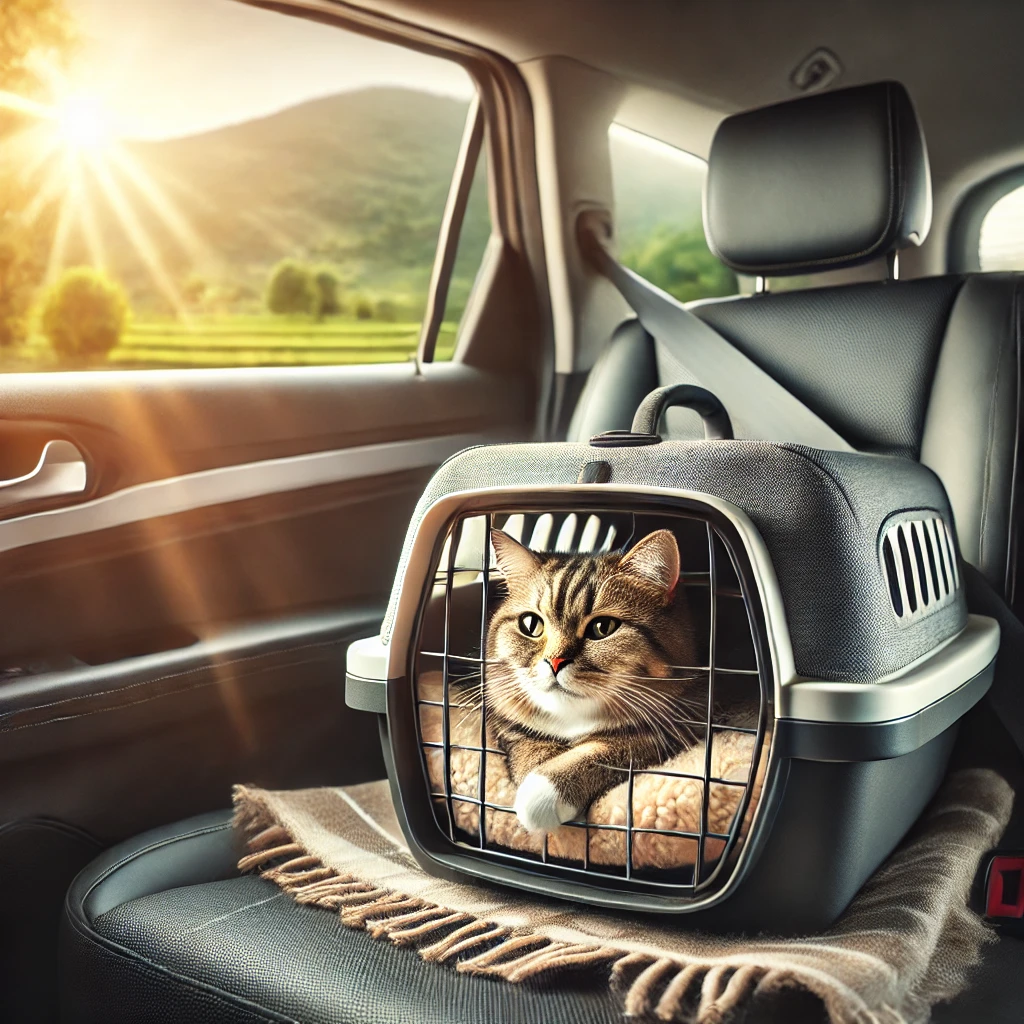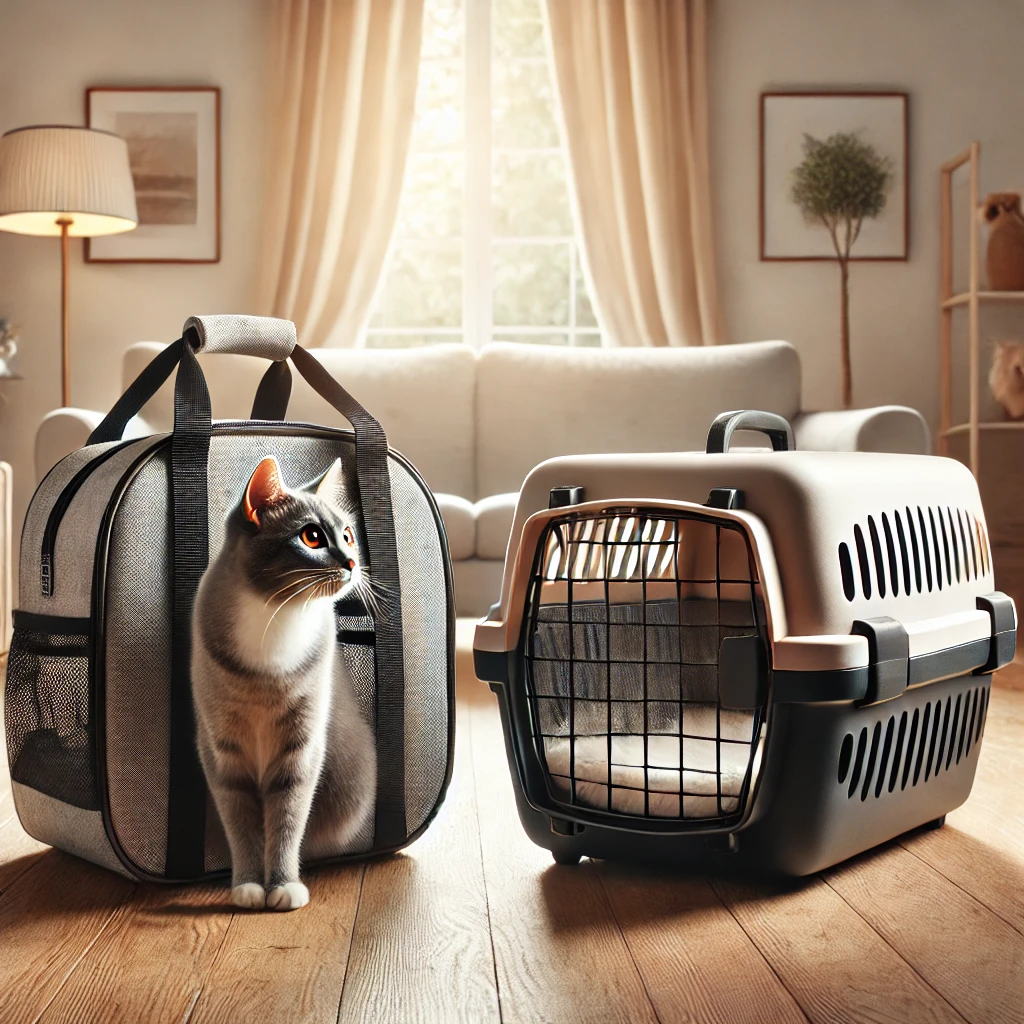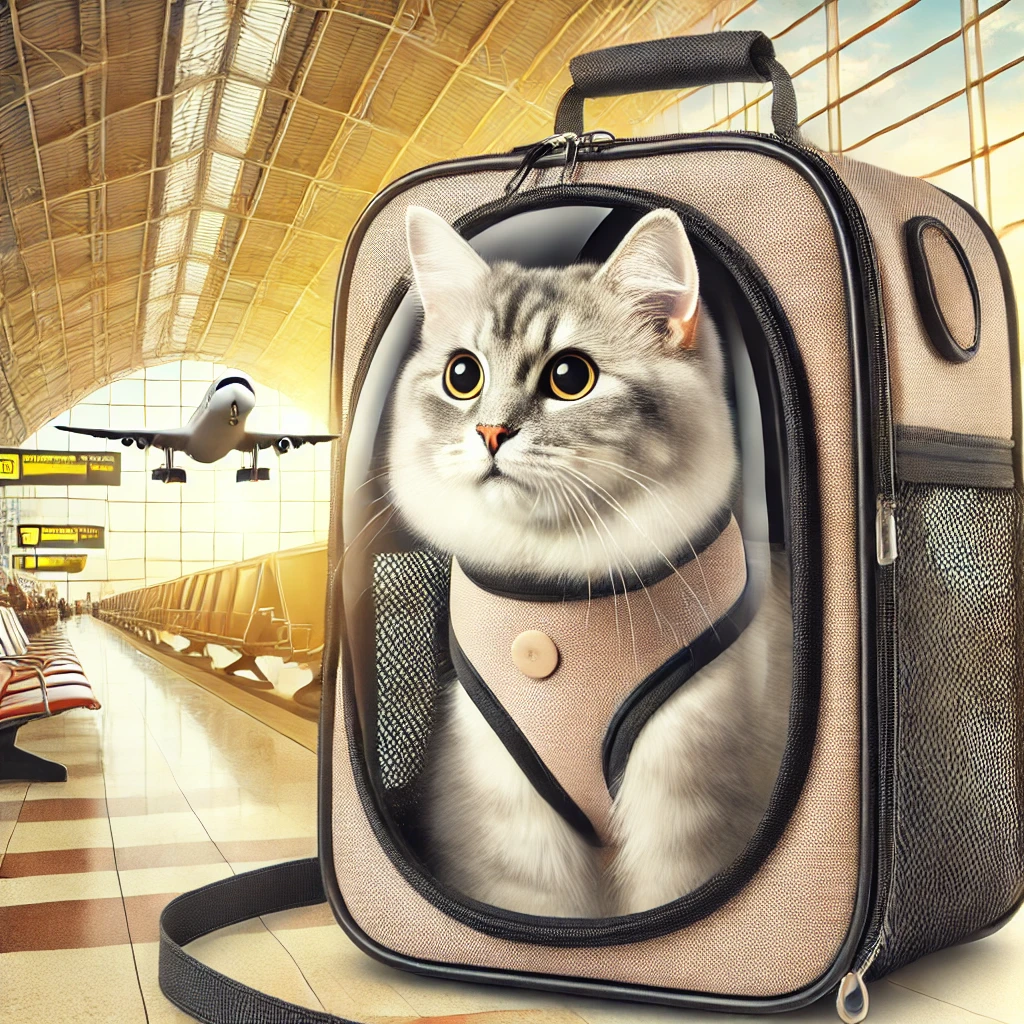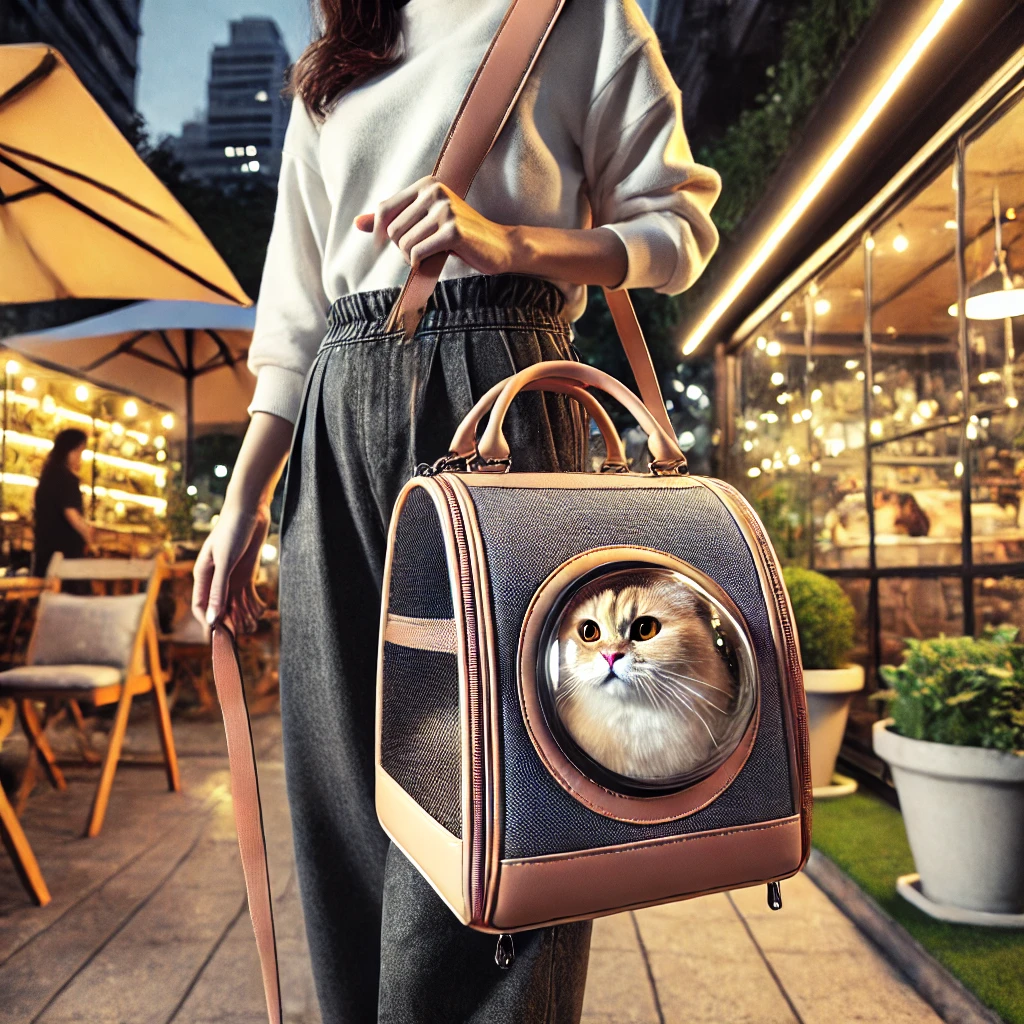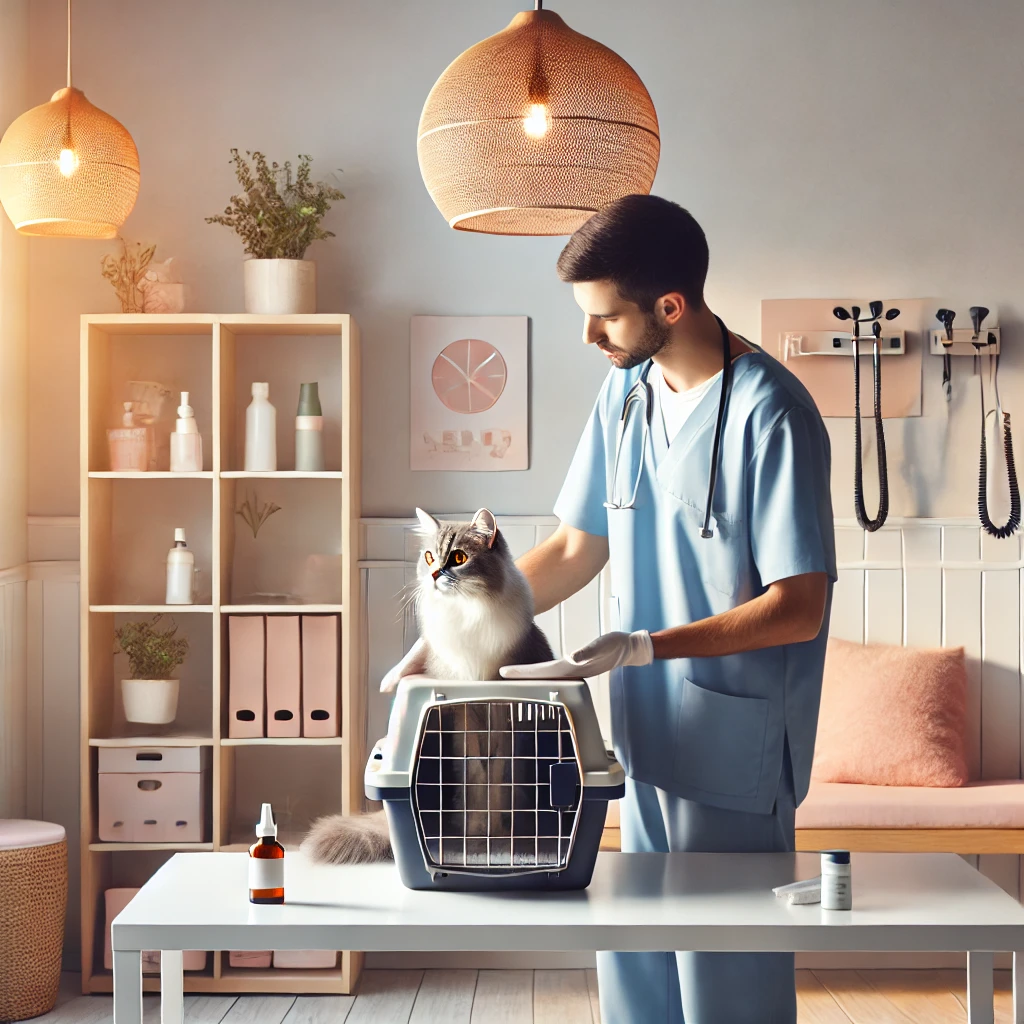The Science of Stress in Cats and Its Effects on Health
Stress is a natural response to challenges or threats, but when it comes to cats, their stress levels can significantly impact their overall well-being, especially in environments they perceive as unsafe, such as veterinary clinics. Understanding the underlying causes of stress in cats during veterinary visits is essential for pet owners, veterinarians, and animal care professionals. This section will delve into the science of stress, explore how it manifests in cats, and discuss its impact on their health, particularly in a veterinary setting.
What is Stress?
Stress can be defined as the body’s reaction to any change that requires an adjustment or response. This can be both physical and emotional. In humans, stress might be triggered by work pressures, personal relationships, or life changes. For cats, stress can arise from sudden changes in their environment, such as unfamiliar smells, new people, or even the journey to the veterinary clinic. It can also stem from anxiety about receiving medical attention or past traumatic experiences related to veterinary visits.
The physiological responses to stress in cats are similar to those in humans and other animals. When stressed, a cat’s body releases hormones such as adrenaline and cortisol, which prepare the body for a “fight or flight” response. In cats, however, this can lead to behavioral changes, physical symptoms, and even health issues if stress becomes chronic.
How Stress Affects Cats Physically
The impact of stress on a cat’s physical health is significant. Prolonged or intense stress can lead to a variety of health issues, some of which may be difficult to detect immediately. One of the most common physical responses to stress in cats is the suppression of the immune system. When a cat is stressed, its immune response becomes less effective, making it more susceptible to infections and illnesses. This is particularly concerning during a veterinary visit, as a stressed cat may be more prone to catching illnesses from other animals in the waiting area.
Stress also affects a cat’s gastrointestinal system. Cats under stress may experience a loss of appetite, vomiting, or diarrhea. These symptoms can complicate a veterinary visit, especially if the cat is already unwell or needs to undergo specific medical procedures. Additionally, stress can exacerbate pre-existing conditions, such as heart disease or kidney problems, making it more challenging for veterinarians to diagnose and treat underlying health issues.
Behavioral Changes in Stressed Cats
Behavioral changes are one of the most obvious signs of stress in cats. A cat that is stressed may display various behaviors, including hiding, growling, hissing, or excessive grooming. In a veterinary environment, a stressed cat may attempt to escape its carrier, hide under furniture, or display aggressive tendencies toward people or other animals. These behaviors can make it difficult for veterinary staff to handle the cat safely, which can lead to delays in treatment and increased stress for both the cat and the owner.
In some cases, a stressed cat may become more vocal, meowing or yowling excessively. This is often a sign of anxiety or fear, particularly in situations where the cat feels trapped or helpless. Conversely, some cats may become unusually quiet and withdrawn, a sign of resignation to their environment or a coping mechanism to avoid further stress.
The Psychological Impact of Veterinary Visits on Cats
The psychological impact of veterinary visits is often overlooked but is just as significant as the physical consequences. For many cats, veterinary visits are associated with fear and discomfort, especially if they have had negative experiences in the past. The unfamiliar sights, sounds, and smells of a veterinary clinic can cause confusion and fear in cats. They may associate the visit with pain, restraint, or other unpleasant experiences, leading to heightened anxiety during future visits.
Additionally, cats are creatures of habit, and any disruption to their routine can cause stress. A sudden car ride to the veterinary clinic, a change in their environment, or the presence of unfamiliar people can all contribute to a cat’s stress levels. This psychological distress can be compounded if the cat is already feeling unwell or anxious about medical procedures.
The Role of the Veterinary Environment in Cat Stress
The veterinary clinic environment plays a significant role in how cats experience stress. The layout and design of the clinic, the behavior of the veterinary staff, and the presence of other animals all contribute to a cat’s stress levels. In many clinics, the waiting area is shared by multiple animals, which can be overwhelming for a cat. The sounds of barking dogs, the smells of unfamiliar animals, and the sight of other stressed pets can all contribute to anxiety.
The behavior of the veterinary staff is also crucial in reducing stress. Cats are highly sensitive to body language and tone of voice, and they can quickly pick up on a veterinarian’s emotions. A calm, confident, and gentle approach is essential in helping to reassure a stressed cat. Additionally, some veterinary clinics are designed with feline comfort in mind, offering separate waiting areas for cats and dogs, as well as quieter, more calming environments for treatment.
Common Triggers of Stress in Veterinary Environments
The veterinary clinic can be a stressful place for cats, and understanding the specific triggers of stress is key to minimizing anxiety and ensuring a smoother visit. In this section, we will explore the various factors that contribute to stress in a veterinary environment, such as environmental changes, unfamiliar smells, the presence of other animals, handling and medical procedures, and past negative experiences. By identifying these triggers, owners and veterinary staff can better prepare for and address the needs of a stressed cat.
Environmental Factors that Contribute to Stress
One of the most significant sources of stress for cats in a veterinary clinic is the unfamiliar environment itself. Cats are creatures of habit, and they find comfort in the familiarity of their home and routine. When taken out of their comfort zone, particularly to a place they associate with discomfort or fear, stress levels can rise quickly.
The waiting area in a veterinary clinic is often filled with foreign smells, sounds, and sights that can be overwhelming for a cat. The scent of other animals, the disinfectant used to clean the space, and the sounds of barking dogs or the hum of machinery can all contribute to anxiety. Additionally, the waiting area might be bustling with other pet owners and animals, creating a chaotic atmosphere that further exacerbates a cat’s stress.
The layout and design of the clinic can also play a role in stress levels. For instance, clinics that do not have separate spaces for cats and dogs may unintentionally cause stress by exposing cats to the noise and activity of barking dogs. Similarly, bright lights, high ceilings, and sterile, clinical environments may feel unsettling for a cat, which prefers smaller, enclosed spaces where they can feel secure.
Unfamiliar Smells and Sounds
Cats have an incredibly acute sense of smell, much stronger than that of humans, and this makes unfamiliar scents in the veterinary clinic particularly distressing. The scent of other animals, disinfectants, and even human perfumes can create a sensory overload for a cat. This can lead to heightened anxiety as the cat is bombarded with a range of unfamiliar odors that contribute to the feeling of being in an unsafe or stressful environment.
Sounds also play a role in stress. Cats are highly sensitive to noise, and the sounds in a veterinary clinic—such as the barking of dogs, the ringing of telephones, or the whirring of medical equipment—can be unsettling. These noises can make it difficult for a cat to relax, as they are constantly alert and on edge, trying to make sense of their surroundings. This heightened state of awareness can exacerbate stress, making the visit to the vet feel like a more traumatic experience.
The Presence of Other Animals
While some cats are relatively social and enjoy the company of other animals, most are territorial by nature and may not react well to the presence of unfamiliar animals. In a veterinary clinic, this is especially true. The waiting area can be filled with other pets, many of whom may be stressed or anxious themselves. The sight of other animals—particularly dogs—can trigger a cat’s instinct to be on guard or defensive.
Cats may also react to the energy of other animals, whether it is the nervousness of a dog or the distress of another cat. This heightened sense of tension can cause a cat to feel more stressed, as they perceive the environment as threatening. Furthermore, the stress of being surrounded by other animals may cause a cat to act out, becoming more vocal, agitated, or withdrawn. These reactions can make it harder for veterinary staff to interact with the cat and carry out necessary procedures.
Handling and Medical Procedures
One of the most significant sources of stress for cats in a veterinary clinic is the handling they experience during their visit. Cats are generally not fond of being restrained, and the physical handling required for examinations or medical procedures can be a major source of distress. Even gentle handling by experienced veterinary staff may feel intrusive to a cat, especially if the cat is already nervous or fearful.
Medical procedures themselves—whether they are routine checkups, vaccinations, blood draws, or more invasive procedures—can also be stressful. The unfamiliarity of the process, combined with potential discomfort or pain, can leave a cat feeling anxious and overwhelmed. Cats are highly sensitive to their bodies and can often sense when something is not right, even if they do not understand the full scope of the procedure. This heightened sensitivity can make any medical treatment feel more invasive and stressful.
Negative Past Experiences
For some cats, the stress of a veterinary visit is compounded by negative past experiences. Cats have excellent memories, and they can associate specific places, smells, or people with previous trauma or discomfort. A cat that has had a bad experience during a previous visit—such as being restrained too roughly or undergoing a painful procedure—may develop a long-term fear of the veterinary clinic.
This association can lead to anticipatory anxiety, where the cat becomes anxious even before arriving at the clinic, as it anticipates the discomfort or fear based on past experiences. Such cats may exhibit signs of stress, such as hiding, growling, or excessive grooming, as soon as they sense they are being taken to the veterinary clinic. This anticipatory anxiety can make it even more difficult for the cat to remain calm during the visit, as the fear and anxiety are already heightened before the actual appointment begins.
The Role of Owners in Stress Reduction
The involvement of the cat’s owner in managing stress at the veterinary clinic cannot be underestimated. Cats are highly attuned to their owners’ emotions, and an anxious or stressed owner can transfer that anxiety to their cat. Conversely, a calm and reassuring owner can help soothe their cat during a visit. One of the most important things an owner can do is to remain calm and composed throughout the visit, as this will help the cat feel more secure and less anxious.
Additionally, owners can help reduce stress by preparing their cats for the visit. This includes getting the cat accustomed to their carrier, making the carrier a comfortable and familiar space, and practicing short trips to the car and back to desensitize the cat to the travel experience. The more positive associations a cat has with the process, the less likely it is to experience stress during the actual veterinary visit.
Strategies for Reducing Cat Stress in a Veterinary Environment
As we’ve discussed in the previous sections, veterinary visits can be highly stressful for cats due to a variety of environmental and procedural triggers. However, there are several strategies that can be employed to reduce this stress, both before and during the visit. These strategies focus on preparing cats for the veterinary experience, creating a calm environment, and using gentle handling techniques. This section will explore these strategies in depth, providing practical tips for pet owners and veterinary professionals to help make veterinary visits less stressful for cats.
Preparing Your Cat for a Veterinary Visit
One of the most effective ways to reduce stress for a cat is through preparation. Just as humans benefit from knowing what to expect during a doctor’s appointment, cats also feel more secure when they can anticipate what is going to happen. The key to reducing anxiety is to gradually desensitize your cat to the various elements of the veterinary visit before the appointment takes place.
Getting Your Cat Used to the Carrier
The carrier is often a source of stress for cats, as it is typically associated with travel and visits to the vet. To reduce anxiety related to the carrier, it is important to make it a positive, comfortable space for your cat. Leave the carrier out in a familiar area of your home, such as the living room, with the door open so your cat can explore it at their own pace. Place comfortable bedding, toys, and even treats inside the carrier to make it a cozy and inviting space.
Over time, your cat will begin to associate the carrier with comfort and security rather than just travel. You can also gradually increase the amount of time your cat spends inside the carrier, allowing them to get used to the confined space. For many cats, a carrier that smells like home will feel less intimidating during the actual trip to the veterinary clinic.
Acclimating Your Cat to Car Rides
Once your cat is comfortable with the carrier, the next step is to help them get used to car rides. Some cats experience motion sickness or anxiety related to car travel, and this can be a major stressor on the way to the vet. To minimize this anxiety, start by taking your cat on short car trips to places that are not associated with the veterinary clinic, such as a park or a relative’s house. The goal is to break the association between the car and the stress of going to the vet.
If your cat is particularly anxious during car rides, you can try using calming products, such as pheromone sprays or natural remedies like CBD oil, to help ease their anxiety. Speak to your veterinarian about what options are safe and effective for your cat.
Creating a Calm and Reassuring Environment at the Clinic
When it comes to reducing stress at the veterinary clinic itself, creating a calm and reassuring environment is essential. Veterinary staff should be mindful of the cat’s emotional state and take steps to minimize stressors during the visit. This can be achieved by implementing strategies such as reducing noise, limiting the number of people handling the cat, and providing a calm and quiet space for the cat to wait before the appointment.
Separate Waiting Areas for Cats and Dogs
One of the most effective ways to reduce stress at the clinic is to ensure that cats and dogs have separate waiting areas. As we discussed in Part 2, the presence of barking dogs or the sight of other stressed animals can significantly increase anxiety in cats. A designated cat-only waiting area helps to minimize these stressors and allows cats to feel more secure while they wait for their appointment.
In addition to separate waiting areas, some veterinary clinics provide calming music or aromatherapy to help create a more peaceful environment for cats. Calming music with soft, soothing tones can help mask the noises of barking dogs or other clinic sounds, creating a less chaotic atmosphere for cats.
Calming Pheromones and Other Products
Pheromones are natural chemicals that animals release to communicate with others of the same species. In cats, these pheromones can have a calming effect. Synthetic versions of these pheromones, such as Feliway, are available in sprays, diffusers, or wipes and can be used to reduce stress during a veterinary visit. Pheromone products can be sprayed inside the carrier or on bedding in the waiting area to help create a sense of calm.
Additionally, natural remedies, such as calming collars, CBD oil, or anxiety wraps, can be used to help soothe a stressed cat. However, it is important to consult with a veterinarian before using any of these products to ensure they are safe for your specific cat.
Gentle Handling Techniques for Veterinary Staff
The way a cat is handled during a veterinary visit plays a significant role in reducing stress. Cats are highly sensitive to touch, and being handled too roughly or too abruptly can increase their anxiety. Veterinary staff should use gentle, slow movements when approaching and handling a cat, avoiding sudden gestures that could startle the animal.
The use of a calm voice and maintaining eye contact can also help reassure the cat. Some cats feel more secure when they are allowed to stay in their carriers during the initial part of the examination. If possible, veterinarians should allow the cat to stay in the carrier while being examined, using the carrier as a protective space. If the cat needs to be removed from the carrier for any procedures, it should be done slowly and with care.
Additionally, some cats are more comfortable being examined while sitting on their owner’s lap, so allowing the owner to hold the cat during certain procedures can help reduce anxiety. The goal is to minimize restraint and give the cat a sense of control over the situation.
Desensitization to Veterinary Procedures
For cats that have had negative experiences at the vet, desensitization to certain procedures may be necessary. This involves gradually introducing the cat to the types of handling or treatments they will experience during a veterinary visit. For example, a cat that is fearful of having its ears examined may benefit from gentle handling of the ears at home prior to the appointment, paired with positive reinforcement, such as treats or praise. The key is to associate the potentially stressful procedure with something positive, which can help reduce fear when the procedure is performed at the clinic.
The Role of Medications for Severe Anxiety
In cases where a cat’s anxiety is severe and difficult to manage with environmental adjustments or behavior modification alone, veterinary professionals may recommend medication to help reduce stress during the visit. Medications such as anti-anxiety drugs or sedatives can be prescribed for cats that have extreme fear of veterinary visits or those that have had traumatic experiences in the past. These medications can be given before the visit to help the cat remain calm and manageable.
However, medication should always be a last resort and used in conjunction with other stress-reducing techniques, such as the ones discussed in this section. It is important for owners to discuss their cat’s needs with their veterinarian to determine the most appropriate course of action.
The Long-Term Benefits of Reducing Stress in Veterinary Environments
Reducing stress in cats during veterinary visits is not only crucial for their immediate comfort but also for their long-term health and well-being. By minimizing anxiety, improving the veterinary experience, and creating positive associations with medical visits, pet owners and veterinary professionals can significantly contribute to a cat’s overall health. This section will explore the long-term benefits of reducing stress in veterinary environments, from improved physical health to better behavioral outcomes, and how these practices can lead to more successful, lasting relationships between cats and their veterinary care team.
Improved Physical Health Outcomes
One of the most important benefits of reducing stress in a veterinary environment is its positive impact on a cat’s physical health. As discussed earlier, chronic stress can suppress a cat’s immune system, making it more vulnerable to infections and illnesses. Stress-induced physical conditions such as gastrointestinal problems, urinary tract issues, and respiratory infections can be exacerbated during veterinary visits. By managing stress effectively, the risk of these issues can be reduced, leading to healthier cats overall.
A calmer cat is also more likely to cooperate with medical procedures, allowing veterinarians to perform thorough examinations and accurate diagnoses. When a cat is less stressed, the veterinarian is able to assess its condition more effectively, leading to earlier detection of health issues and more precise treatments. This can be particularly beneficial for cats with chronic conditions or those undergoing long-term treatment, as reducing stress makes it easier for veterinary professionals to monitor and adjust treatment plans.
Positive Associations with Veterinary Visits
Another significant benefit of reducing stress is the creation of positive associations with veterinary visits. Cats, like many animals, learn through association. If a cat consistently experiences stress, fear, or pain during veterinary visits, it may develop a long-term aversion to the clinic. This can make future visits even more challenging, as the cat may become increasingly anxious or uncooperative.
By implementing stress-reduction strategies, such as gentle handling, calming products, and a less overwhelming clinic environment, veterinary professionals and pet owners can help create a more positive experience for the cat. Over time, the cat will begin to associate the veterinary visit with comfort and care rather than fear and discomfort. This leads to less anxiety and better cooperation during future visits, which in turn makes it easier to provide essential medical care and maintain the cat’s health.
Positive associations can also be reinforced through gradual exposure to the clinic environment, as well as the use of rewards such as treats and praise. These rewards help reinforce the idea that the visit to the vet is not something to fear, but rather a part of their overall care routine.
Long-Term Behavioral Benefits
Stress during veterinary visits is not only harmful to a cat’s physical health but can also lead to long-term behavioral issues. Cats that experience anxiety during visits to the vet may become fearful or aggressive in other situations as well. For example, a cat that associates travel with stress may become anxious in the car, or a cat that is frightened by handling at the vet may react defensively when touched or held at home.
By reducing stress at the veterinary clinic, pet owners can help prevent the development of these long-term behavioral issues. A cat that feels more secure during medical visits is less likely to develop generalized anxiety or fearful behavior. Instead, the cat learns that it can trust its owners and the veterinary team to provide safe, gentle care. This positive emotional experience can lead to improved behavior both in the clinic and at home, promoting a healthier, happier cat.
Moreover, cats that experience lower levels of stress are more likely to have better social interactions with both humans and other animals. A less anxious cat is more likely to display affectionate behavior, play with toys, and interact positively with family members. This leads to a more balanced and emotionally stable cat, which in turn contributes to a better quality of life.
Better Long-Term Veterinary Relationships
Reducing stress in the veterinary environment also fosters a better, more collaborative relationship between the cat, its owner, and the veterinary team. When cats are calmer during visits, it makes it easier for veterinarians to assess their health, provide necessary treatments, and offer advice to owners. The relationship between the cat and its veterinarian becomes one of trust and mutual respect, leading to more effective care over time.
Furthermore, when a cat is less stressed during veterinary visits, it is easier for the veterinary team to establish a rapport with the animal. Veterinarians and veterinary technicians can build trust with the cat, which can improve the cat’s cooperation during exams and treatments. This relationship is especially important for ongoing care, as it allows veterinary professionals to monitor a cat’s health over time, provide preventive care, and make informed decisions about treatment options.
For pet owners, the ability to bring their cat to the vet without excessive stress or anxiety is a major relief. A positive experience at the clinic helps build confidence in the veterinary team, ensuring that pet owners are more likely to seek regular checkups and timely medical attention for their cats. This ultimately leads to better health outcomes for cats, as regular veterinary visits are crucial for early detection of health issues and preventive care.
The Impact of Stress Reduction on Older and Special Needs Cats
The benefits of reducing stress are particularly important for older cats or those with special needs. Senior cats often have chronic health conditions, such as arthritis, kidney disease, or diabetes, which require regular veterinary monitoring and treatment. Reducing stress during these visits can make it easier for veterinarians to manage these conditions and adjust treatment plans as necessary.
Similarly, cats with special needs, such as those with behavioral disorders, sensory impairments, or physical disabilities, may experience heightened stress during veterinary visits. For these cats, a calm and predictable environment is essential to ensuring that they receive the care they need without exacerbating their anxiety. Implementing stress-reduction techniques such as desensitization, gentle handling, and calming products can significantly improve the experience for these cats, leading to better long-term health management.
Preventing the Development of Chronic Stress
Finally, by addressing stress early and proactively, pet owners and veterinary professionals can prevent the development of chronic stress in cats. Chronic stress has been linked to a wide range of health problems, including behavioral issues, weakened immune function, and increased vulnerability to illness. Cats that experience constant or prolonged stress are at greater risk of developing these long-term health problems, which can compromise their quality of life.
By creating a stress-free or low-stress environment during veterinary visits, it is possible to prevent this chronic stress from taking root. Over time, this can lead to healthier, happier cats that require fewer interventions and experience fewer health problems related to stress. A proactive approach to stress management ensures that cats receive the care they need without compromising their emotional or physical well-being.
